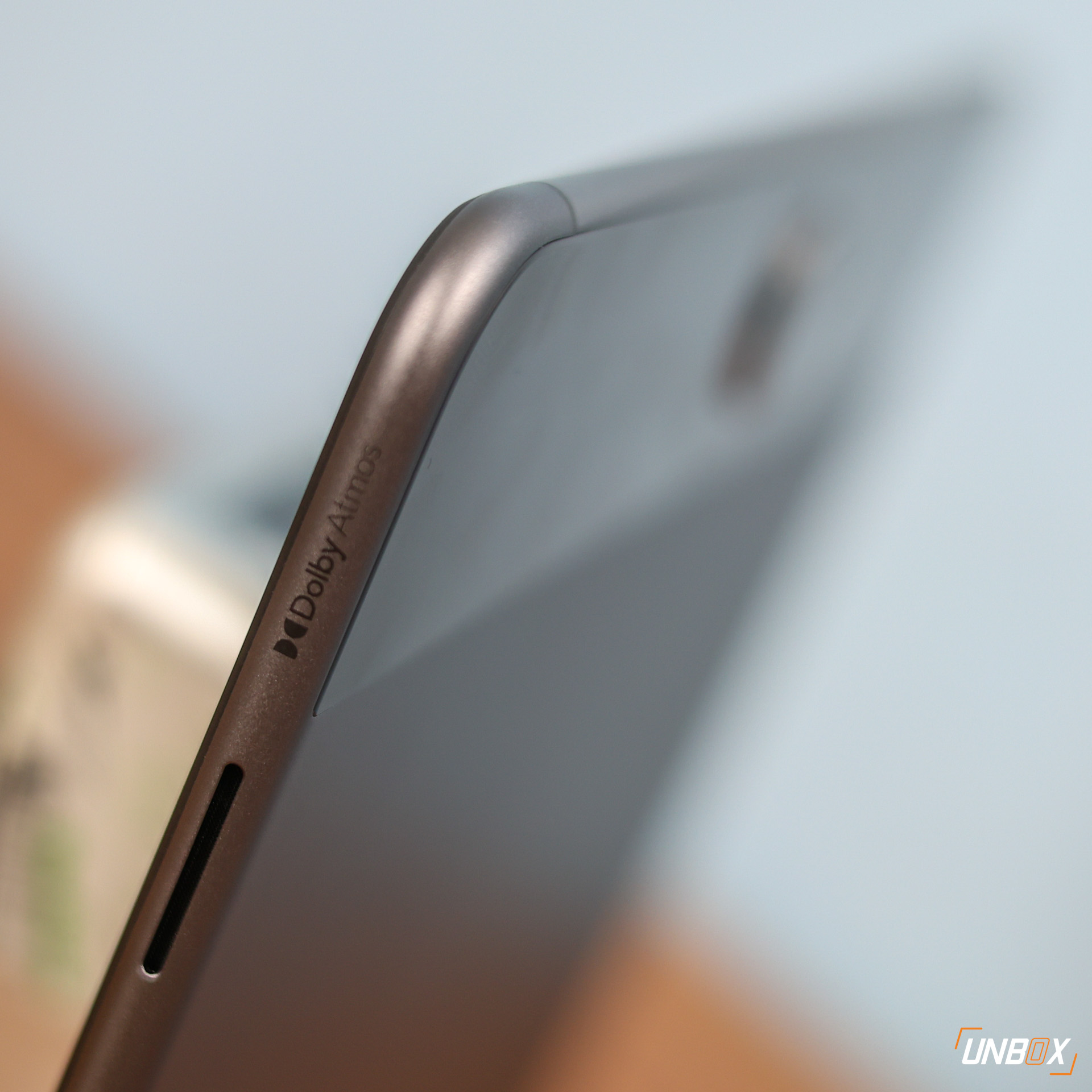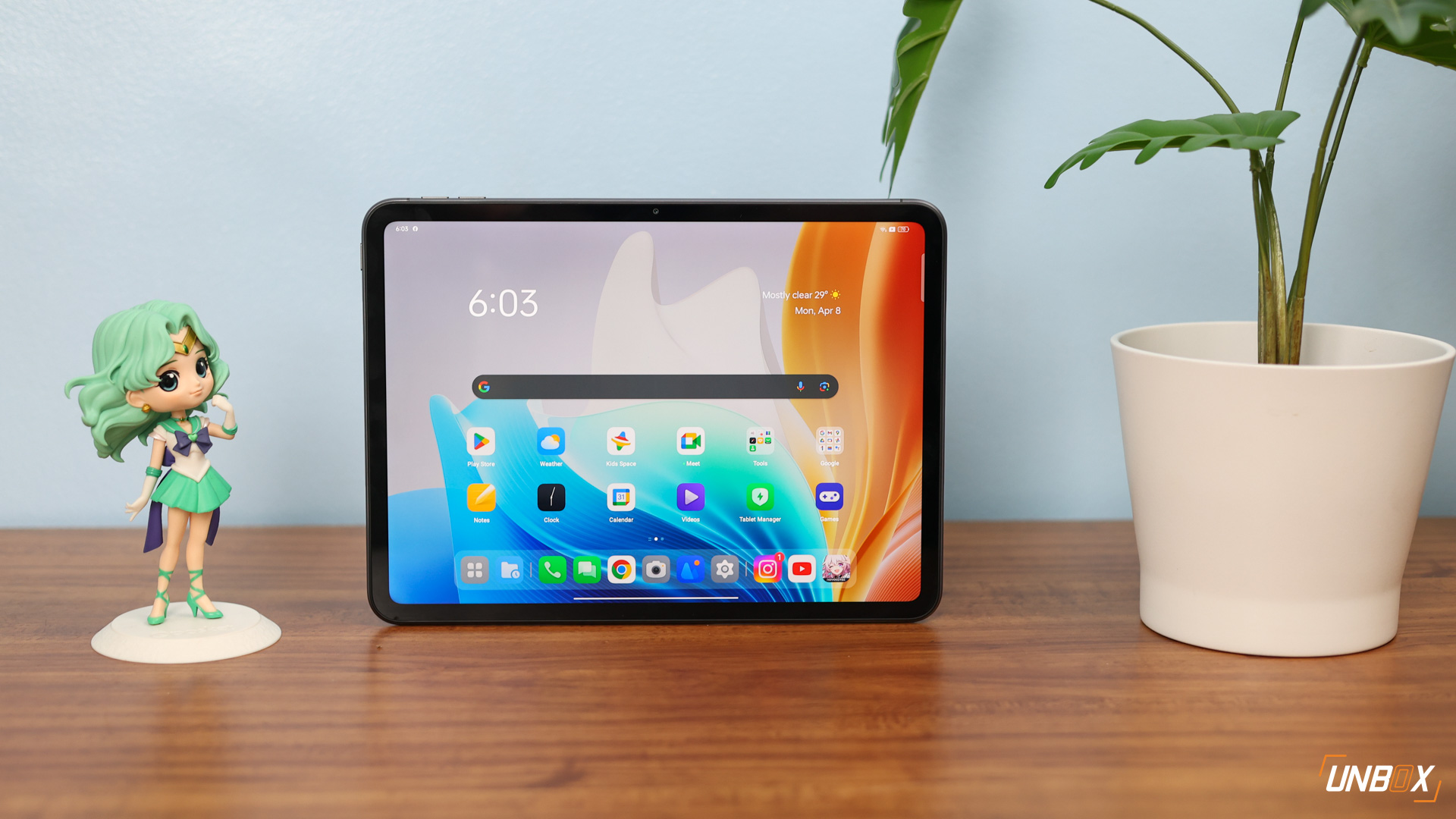Review Verdict: While its internals are not the best you’d expect for its price tag, the OPPO Pad Neo gets a lot of things right when it comes to how ColorOS behaves in a tablet form factor.
Pros
- Excellent ColorOS software implementation
- Sleek tablet design
Cons
- Not the best internals for its price
- Polarizing camera placement
After more than a year since its first tablet offering in the Philippines with the Pad Air, OPPO updates its offering with the arrival of the Pad Neo. While it is more expensive, the Pad Neo offers substantial upgrades across the board. Is its asking price justifiable for a mid-range tablet in the Philippines?

OPPO Pad Neo Review Philippines: Design
While the Pad Neo retains the same dual-tone finish as the Pad Air, it has a different design language. Aside from the curved frame sides, you have the 8-megapixel camera placed in the center when in landscape orientation. We have divisive thoughts about this design approach, but as we explained in our review of the HONOR Pad 9, it’s a functional design since you’ll have less changes of smudging the camera lens when using the Pad Neo in landscape orientation.

The button and port layout of the Pad Neo is the same as the Pad Air, which includes a quad-speaker system with Dolby Atmos, a power button on the left side, volume controls on top, and the USB-C port on the right side. The main change here is the SIM tray on the left side, which allows you to put both a SIM card and a MicroSD card. The Pad Neo is around 100g heavier than the Pad Air, but that’s because you are getting a bigger battery and a bigger display.

OPPO Pad Neo Review Philippines: Display and speakers
The Pad Neo boasts a bigger 11.4-inch IPS display with a 90hz refresh rate, a 2.4k display resolution, and a 7:5 aspect ratio that makes it shorter and taller than the Pad Air. OPPO’s decision to go for this aspect ratio is to provide a book-like reading experience especially when using split screen with apps–and that will be one of the main strengths of the Pad Neo.
The Pad Neo’s display is one of the better ones we’ve tried on a mid-range tablet with its broad color range and a Nature Tone that works similarly to Apple’s True Tone where the display adjusts color temperature based on your surroundings to give you a comfortable viewing experience.

Like the Pad Air, you also get a quad-speaker system with Dolby Atmos on the Pad Neo. They sound great for a quad-speaker system with a decent soundstage that still offers decent bass despite its thin, under 7mm body.

OPPO Pad Neo Review Philippines: Cameras
Polarizing placement aside, the cameras on the Pad Neo are basic, consisting of 8-megapixel sensors on both front and rear cameras. The image quality is closer to entry-level phones, and that’s fine since you’ll not really use the Pad Neo for its cameras. For those curious, here are some snaps we took using the Pad Neo.
In general, the shots taken by the Pad Neo are passable as long as you have good lighting, and image quality dips when you have limited lighting.

OPPO Pad Neo Review Philippines: Internals and Battery Life
Powering the Pad Neo is a Helio G99 processor that’s paired with 8GB LPDDR4X RAM and 128GB UFS 2.2 storage. The Pad Neo is a bit on the expensive side for a mid-range tablet with its internals–however, it makes up for it by having a SIM slot for LTE connectivity and a MicroSD card for storage expansion.
Another advantage the Pad Neo has is how OPPO implemented optimized software that makes it run smoother than usual despite its specs. We’ve been using the Pad Neo to play Honkai: Star Rail at high graphics and 30FPS mode, and the game ran fine without any noticeable lags.
The Pad Neo gets an 8000mAh battery that supports 33w charging, which is much better than what the Pad Air has to offer. We were able to get around 12 hours of battery life with the Pad Neo in PCMark’s battery benchmark test with 90hz refresh rate enabled, which translates to a day’s worth of use before you need to charge it.

OPPO Pad Neo Review Philippines: User Interface
OPPO’s decision to make use of a 7:5 aspect ratio for the Pad Neo makes sense especially when it comes to software implementation. Android tablets still have a long way to go in matching iPadOS in terms of software, and the tablet version of ColorOS is probably the closet thing we can get to a good tablet UI. The best example of this implementation is with Facebook, as the Pad Neo maximizes its screen estate as you browse through the app. Some user scenarios for this include going into automatic split screen when you open up Messenger from the Facebook app or browse through a Reel or another Facebook page–all while not interrupting your browsing experience with your feed.

This proper software implementation is also seen with Instagram, where icons are rearranged automatically the moment you view Reels through the app. Spotify has a great implementation on the Pad Neo, where the app’s UI is well organized and adapts to different scenarios depending if you are browsing through songs or playlists, or checking through the various short videos that are available through the platform.
To OPPO’s credit, the reason why they were able to pull off a proper tablet UI experience is because it’s also the same approach we saw them implement on the Find N3. We like OPPO’s approach here, and we look forward for other brands to follow the same example.

OPPO Pad Neo Review Philippines: Wrap-up and Conclusions
While there are several compelling mid-range tablets in the Philippines, the Pad Neo still stands out thanks to OPPO’s excellent ColorOS implementation in a tablet form factor. The Pad Neo’s behavior with several key apps makes it one of the better Android tablets in the market in terms of overall software experience.
OPPO Pad Neo Review Philippines: Price
The Pad Neo is priced at Php 15,999.


















